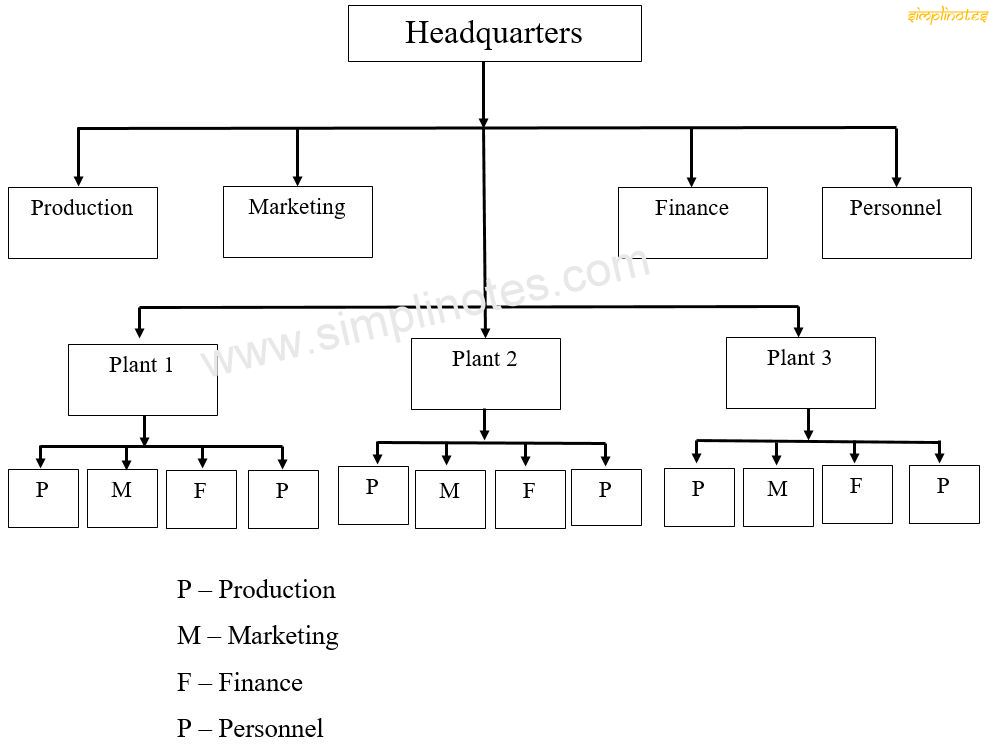(c) Functional Organization
F.W. Taylor is the exponent of the functional organization structure. In his opinion, if the functions of the organization can be performed through different departments, a good result will be achieved. The functions of one department are entrusted to an expert and he performs the functions of that department and become accountable to the upper level of management. Taylor cites eight types of functional foreman a:
(a) Gang boss
(b) Speed boss
(c) Repair boss
(d) Inspector
(e) Shop disciplinarian
(f) Route clerk
(g) Inspection card clerk
(h) Time and cost clerk
Functional organization structure is most widely used in the medium and large organizations having limited number of products. Functional structure is created by grouping the activities on the basis of functions required for the achievement of organizational objectives. For this purpose, all the functions required are classified into basic, secondary, and supporting functions according to their nature and importance. The basic or major functions are those which are essential for the organization. For example. In a manufacturing organization, production and marketing are basic functions when departments are created on the basis of basic functions and a manager feels that his span of management is too wide to manage effectively, which invariably happens in large organizations, several departments are created on the basis of dividing a basic function into sub-functions. For example, marketing may be subdivided into marketing research, advertising, sales, and so on. Thus, the process of functional differentiation may continue through successive levels in the organization. Apart from basic and secondary functions, departments are also created to take advantages of specialization and to support basic and secondary activities. Such departments may be finance, accounting, personal, industrial relations, legal, etc. These departments may be created and placed according to their role in the organization. For example, if the organization emphasizes product development and innovation, research and development department may be given high status.
Authority relationships in functional structure may be in the form of line, staff, and functional. In fact, the concept of functional authority is very appropriate for functional structure. Thus, functional structure is characterized by the following:
i. Specialization by functions,
ii. Emphasis on sub-goals,
iii. Pyramidal growth of the organization,
iv. Line and staff division,
v. Functional authority relationship among various departments, and
vi. Limited span of management and tall structure.

